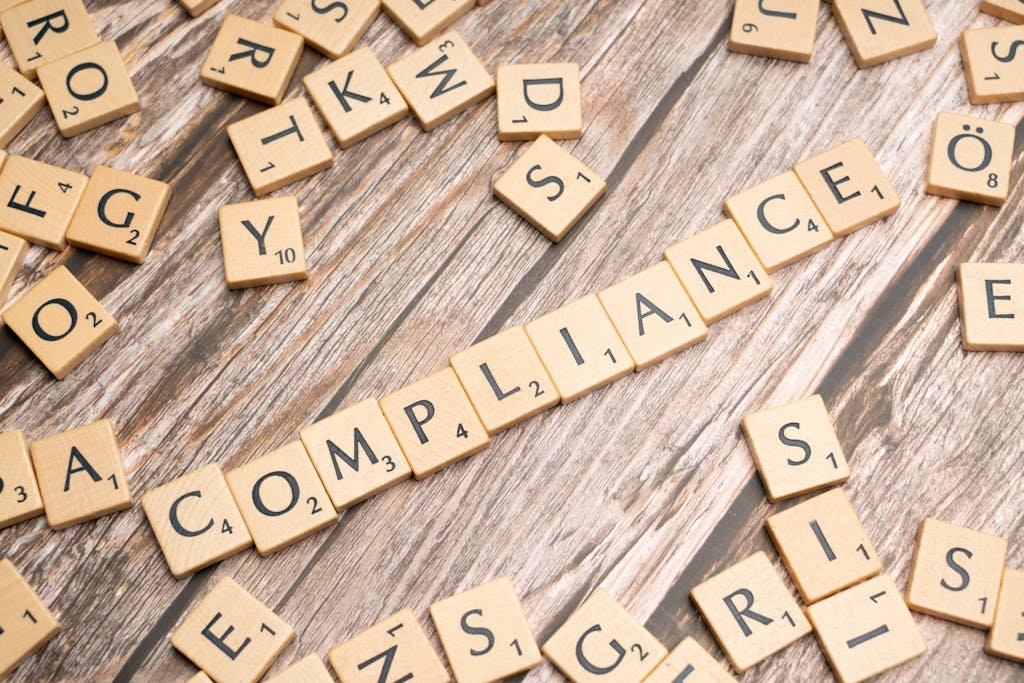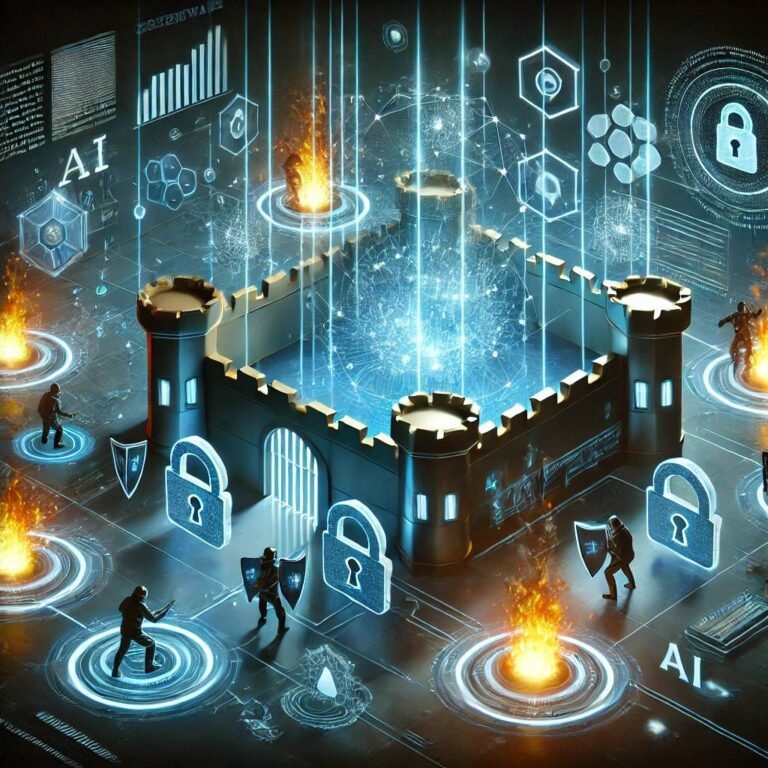Benefiting from ISA/IEC 62443 to Comply with NIS2
Introduction to NIS2 and Its Importance
The Network and Information Systems Directive, commonly referred to as NIS2, represents a significant advancement in the European Union’s cybersecurity framework. Enacted to enhance the security and resilience of critical infrastructure, NIS2 builds on the original NIS Directive by broadening its scope and imposing stricter requirements on member states and operators of essential services. The directive aims to address the growing cyber threats that pose substantial risks to the stability and security of the digital economy.
NIS2 is crucial because it mandates comprehensive cyber risk-management measures, ensuring that organizations implement robust security protocols to protect against cyber incidents. By mandating regular risk assessments, incident reporting, and the adoption of advanced security practices, NIS2 seeks to create a harmonized approach to cybersecurity across the EU. The directive emphasizes the importance of preparedness and resilience, requiring organizations to have detailed response and recovery plans in place.
International standards play a pivotal role in achieving NIS2 compliance. Standards such as ISA/IEC 62443 provide a structured framework for implementing effective cybersecurity measures. These standards offer detailed guidelines on securing industrial automation and control systems, which are often integral to critical infrastructure. By aligning with ISA/IEC 62443, organizations can ensure they meet the stringent requirements set forth by NIS2, thereby enhancing their overall security posture.
In summary, the NIS2 Directive underscores the necessity for heightened cybersecurity measures in response to evolving threats. Its focus on risk management and incident preparedness aligns closely with the principles outlined in international standards like ISA/IEC 62443. Understanding the importance of NIS2 and leveraging these standards can significantly aid organizations in navigating the complexities of compliance and fortifying their defenses against cyber threats.
The ISA/IEC 62443 standard is a comprehensive framework designed to enhance the cybersecurity of Industrial Automation and Control Systems (IACS). Its primary purpose is to provide a structured approach to securing IACS against a wide range of threats. This standard is particularly relevant in today’s industrial landscape, where the convergence of operational technology (OT) and information technology (IT) has expanded the attack surface, making robust cybersecurity measures imperative.

Purpose and Structure of ISA/IEC 62443
The ISA/IEC 62443 standard is structured into various parts that address different aspects of IACS security. These parts are categorized into general, policy and procedures, system, and component levels. Each category addresses specific needs, ensuring a holistic approach to cybersecurity. The general section covers foundational concepts and models that underpin the entire standard. The policy and procedures section focuses on organizational measures and processes necessary for effective cybersecurity management.
Key Components of ISA/IEC 62443
One of the critical components of the standard is the secure product development lifecycle outlined in ISA/IEC 62443-4-1. This part provides guidelines for developing secure industrial products, emphasizing the importance of security throughout the product’s lifecycle. It covers aspects such as security requirements definition, secure design, implementation, verification, and ongoing maintenance, ensuring that products are resilient against evolving threats.
Another vital part of the standard is ISA/IEC 62443-4-2, which specifies technical security requirements for IACS components. This section details the necessary security capabilities that components should possess to mitigate potential risks. It includes measures such as authentication, authorization, encryption, and security monitoring, all aimed at fortifying the security posture of individual components within an IACS environment.
Overall, the ISA/IEC 62443 standard provides a robust and comprehensive framework for enhancing the cybersecurity of industrial systems. By adhering to its guidelines, organizations can significantly reduce their vulnerability to cyber-attacks, ensuring the continuity and reliability of their critical operations.
Alignment of ISA/IEC 62443 with NIS2 Requirements
The alignment of ISA/IEC 62443 with the NIS2 Directive is central to ensuring robust cybersecurity measures. ISA/IEC 62443 is a comprehensive set of standards focused on industrial automation and control systems (IACS) security. This alignment helps organizations meet the stringent requirements set forth by NIS2, enhancing their overall cybersecurity posture.
One of the core components of ISA/IEC 62443 is risk analysis. Conducting thorough risk assessments is crucial for identifying potential vulnerabilities and threats, which is also a key requirement under NIS2. By systematically analyzing risks, organizations can implement appropriate security controls, thereby fulfilling NIS2’s mandate for risk management.
Access control is another critical element where ISA/IEC 62443 aligns with NIS2 requirements. The standards advocate for robust access control mechanisms to ensure that only authorized personnel have access to sensitive systems and data. This is in direct compliance with NIS2’s emphasis on preventing unauthorized access and ensuring the integrity of critical infrastructure.
Strong authentication mechanisms are essential in both ISA/IEC 62443 and NIS2. The standards recommend the use of multi-factor authentication (MFA) to enhance security. Implementing MFA helps organizations meet NIS2 requirements by mitigating the risk of credential theft and unauthorized access.
Cryptography plays a significant role in protecting data integrity and confidentiality. ISA/IEC 62443 standards emphasize the use of strong encryption techniques, which align with NIS2’s directives on safeguarding sensitive information. Proper implementation of cryptographic controls ensures that data remains secure during transmission and storage.
Continuous monitoring is a vital aspect of both ISA/IEC 62443 and NIS2. The standards advocate for constant oversight of systems to detect and respond to security incidents promptly. This proactive approach is essential for maintaining compliance with NIS2’s requirement for real-time threat detection and mitigation.
Business continuity and disaster recovery are also key areas where ISA/IEC 62443 supports NIS2 compliance. The standards provide guidelines for developing and maintaining an effective business continuity plan (BCP) and disaster recovery plan (DRP). These plans ensure that organizations can quickly recover from disruptions, thereby meeting NIS2’s expectations for resilience in the face of cyber incidents.
In summary, implementing ISA/IEC 62443 standards provides a structured approach to achieving NIS2 compliance. By focusing on risk analysis, access control, strong authentication, cryptography, continuous monitoring, business continuity, and disaster recovery, organizations can significantly enhance their cybersecurity measures and meet the rigorous requirements of the NIS2 Directive.
Sector-Specific Applications of ISA/IEC 62443
ISA/IEC 62443 is an internationally recognized standard that provides a robust framework for securing industrial automation and control systems (IACS). Its application across various sectors, including power utilities, manufacturing, and oil and gas, is crucial for meeting the stringent cybersecurity requirements mandated by the NIS2 directive.
In the power utility sector, ISA/IEC 62443 helps in safeguarding critical infrastructures such as power grids and substations. By implementing the standard, utility companies can enhance their cybersecurity posture, ensuring the integrity and availability of their services. For instance, it aids in defining security zones and conduits, thereby segmenting the network and limiting the impact of potential cyber incidents. This structured approach is vital for complying with NIS2, which emphasizes the protection of essential services.
Manufacturing environments also benefit significantly from ISA/IEC 62443. The standard provides guidelines for securing the operational technology (OT) systems that manage production processes. By adopting these guidelines, manufacturers can protect against threats that could disrupt operations or lead to intellectual property theft. The standard’s risk assessment and management protocols aid in identifying vulnerabilities, allowing manufacturers to implement appropriate countermeasures. This proactive stance not only aligns with NIS2’s requirements but also enhances overall operational resilience.
In the oil and gas sector, the application of ISA/IEC 62443 is instrumental in protecting complex and distributed control systems. The standard facilitates the implementation of layered security measures, addressing both external and internal threats. This is particularly important in environments where the consequences of a cyber attack can be catastrophic. By adhering to ISA/IEC 62443, oil and gas companies can bolster their defenses, ensuring compliance with NIS2 while safeguarding critical assets and operations.
Overall, the sector-specific applications of ISA/IEC 62443 underscore its versatility and efficacy in enhancing cybersecurity across diverse industries. By integrating the standard into their security strategies, organizations not only comply with NIS2 but also achieve a higher level of protection for their critical infrastructures and processes.

Role of Certified Components in Ensuring Compliance
Deploying certified components is a cornerstone in the pursuit of a secured supply chain and achieving compliance with NIS2 directives. This approach ensures that each element in the industrial network adheres to stringent cybersecurity standards, thereby mitigating risks associated with vulnerabilities and cyber threats.
Cisco’s industrial networking portfolio exemplifies how certified products can contribute to a robust cybersecurity posture. By securing certification against ISA/IEC 62443-4-1 and 62443-4-2, Cisco has demonstrated its commitment to aligning with international standards that govern the security of industrial automation and control systems.
ISA/IEC 62443-4-1 focuses on the secure development lifecycle requirements for products used in these systems. It mandates that the development process incorporates security measures from the initial design phase through to deployment and maintenance. Cisco’s adherence to these guidelines ensures that its products are designed with security as a foundational element.
Meanwhile, ISA/IEC 62443-4-2 specifies technical security requirements for components, ensuring they are equipped to withstand and counteract potential cyber threats. By achieving this certification, Cisco’s components are validated for their robustness in securing industrial networks across various sectors.
Utilizing certified components such as those from Cisco not only enhances the defense mechanisms within an industrial network but also simplifies compliance with NIS2 requirements. Organizations benefit from a reduction in the complexity and cost associated with implementing and maintaining security measures, as these certified products come pre-equipped with necessary safeguards.
Moreover, the deployment of certified components fosters trust within the supply chain. Stakeholders, including partners and customers, can be assured of the reliability and security of the products in use, which is a critical factor in maintaining operational integrity and continuity.
Incorporating certified components into the industrial infrastructure is a proactive step towards achieving a resilient cybersecurity framework, thereby facilitating compliance with NIS2 and safeguarding critical assets against the evolving landscape of cyber threats.
Implementing Key Parts of ISA/IEC 62443 for NIS2 Compliance
The integration of ISA/IEC 62443 standards is crucial in aligning cybersecurity practices with NIS2 compliance requirements. Specifically, parts 2-1, 3-2, and 3-3 of ISA/IEC 62443 provide comprehensive guidelines that organizations can adopt for enhanced security. These parts encompass methodologies for risk analysis, access control mechanisms, and continuous monitoring, all of which are fundamental to achieving NIS2 compliance.
Part 2-1 of ISA/IEC 62443 addresses the establishment of a robust cybersecurity management system (CSMS). Organizations should begin by conducting a thorough risk analysis to identify potential vulnerabilities within their industrial automation and control systems (IACS). This involves assessing the likelihood and impact of various threats and implementing appropriate mitigating controls. A well-documented risk management process ensures that all identified risks are systematically addressed, aligning with NIS2’s emphasis on proactive risk management.
Part 3-2 focuses on security risk assessment and system design. Organizations must architect their systems with security as a paramount consideration. This includes segmenting networks to limit the spread of potential incidents and implementing defense-in-depth strategies. Access control mechanisms are essential; ensuring that only authorized personnel have access to critical systems and data is a key requirement of both ISA/IEC 62443 and NIS2. Employing multi-factor authentication and regularly updating access privileges can significantly enhance security posture.
Continuous monitoring, as outlined in part 3-3, is another vital element. Organizations should establish ongoing surveillance of their systems to detect and respond to anomalies in real-time. Implementing intrusion detection systems (IDS) and security information and event management (SIEM) tools helps in identifying and mitigating threats promptly. Regular audits and assessments are also necessary to ensure that security measures remain effective and compliant with NIS2 regulations.
By systematically implementing these key parts of ISA/IEC 62443, organizations can effectively meet NIS2 requirements. This holistic approach not only enhances cybersecurity resilience but also ensures regulatory compliance, thereby safeguarding critical infrastructure and services.
Future European Certification Schemes and ISA/IEC 62443
The European Union is on the brink of unveiling new certification schemes aimed at enhancing cybersecurity across various sectors, including cloud services, 5G networks, consumer IoT devices, and industrial infrastructures. These forthcoming regulations are poised to play a critical role in fortifying the cybersecurity landscape by establishing standardized protocols and benchmarks. The alignment of these new European certification schemes with the ISA/IEC 62443 standards presents a strategic opportunity for organizations to streamline their compliance efforts.
The ISA/IEC 62443 framework is already widely recognized for its comprehensive approach to securing industrial automation and control systems (IACS). It offers a robust methodology for risk assessment, countermeasure implementation, and overall system security. As European entities gear up for the new certification requirements, those already familiar with or certified in ISA/IEC 62443 will be at a distinct advantage. Their pre-existing adherence to these standards can significantly ease the transition to the new European mandates.
For organizations, the strategic importance of preparing for these future certification schemes cannot be overstated. By proactively aligning their cybersecurity measures with ISA/IEC 62443, businesses can not only meet the impending European standards with greater efficiency but also enhance their overall security posture. This preparation involves a thorough understanding of both current and future regulations, ensuring that cybersecurity practices are resilient and adaptable to evolving threats.
Moreover, organizations that are already compliant with ISA/IEC 62443 will likely find the process of obtaining new certifications less cumbersome. The overlapping principles and methodologies between the ISA/IEC 62443 standards and the upcoming European schemes mean that much of the foundational work will already be in place. This alignment not only saves time and resources but also positions organizations as leaders in cybersecurity compliance, potentially giving them a competitive edge in their respective industries.
In summary, the impending European certification schemes for cloud, 5G, IoT, and industrial infrastructures underscore the necessity of robust cybersecurity practices. Aligning these new requirements with the established ISA/IEC 62443 standards offers a strategic pathway for organizations to ensure compliance, enhance security, and maintain a competitive advantage. Preparing for these changes today will pave the way for a more secure and resilient tomorrow.
Conclusion and Strategic Recommendations
In navigating the complexities of cybersecurity, the integration of ISA/IEC 62443 standards proves to be a pivotal strategy for organizations aiming to comply with NIS2 regulations. This comprehensive framework not only addresses cybersecurity from a holistic perspective but also aligns seamlessly with the objectives of NIS2, fostering a robust defense against cyber threats. Throughout this blog post, we have explored how ISA/IEC 62443 can facilitate compliance, enhance security posture, and ensure resilience in the face of evolving cyber challenges.
To fully leverage the benefits of ISA/IEC 62443 for NIS2 compliance, organizations should adopt a strategic approach that encompasses several key recommendations. Firstly, conducting thorough risk assessments is essential to identify vulnerabilities and prioritize mitigation efforts. By understanding the specific risks within their operational environments, organizations can tailor their security measures effectively.
Secondly, implementing a robust cybersecurity management system (CSMS) based on ISA/IEC 62443 principles can significantly enhance preparedness. This involves defining clear policies, establishing comprehensive procedures, and ensuring continuous monitoring and improvement. A well-structured CSMS not only facilitates compliance but also promotes a proactive stance towards cybersecurity.
Moreover, investing in employee training and awareness programs is crucial. Ensuring that staff are well-versed in cybersecurity best practices and are vigilant against potential threats can mitigate the risk of human error, which often serves as a gateway for cyberattacks. Regular training sessions and simulated attack scenarios can reinforce a culture of security within the organization.
Additionally, organizations should consider engaging with cybersecurity experts and consultants to gain insights and guidance tailored to their specific needs. External expertise can provide valuable perspectives and enhance the effectiveness of cybersecurity strategies.
Finally, staying abreast of the latest developments in cybersecurity standards and regulations is imperative. As the regulatory landscape continues to evolve, continuous alignment with international standards such as ISA/IEC 62443 will ensure that organizations remain resilient and compliant.
In conclusion, the proactive adoption of ISA/IEC 62443 not only streamlines NIS2 compliance but also fortifies an organization’s overall cybersecurity framework. By embracing strategic recommendations and fostering a culture of continuous improvement, organizations can navigate the dynamic cybersecurity landscape with confidence and assurance.
For more articles related to technology, please browse around InnoVirtuoso and find more interesting reads.







